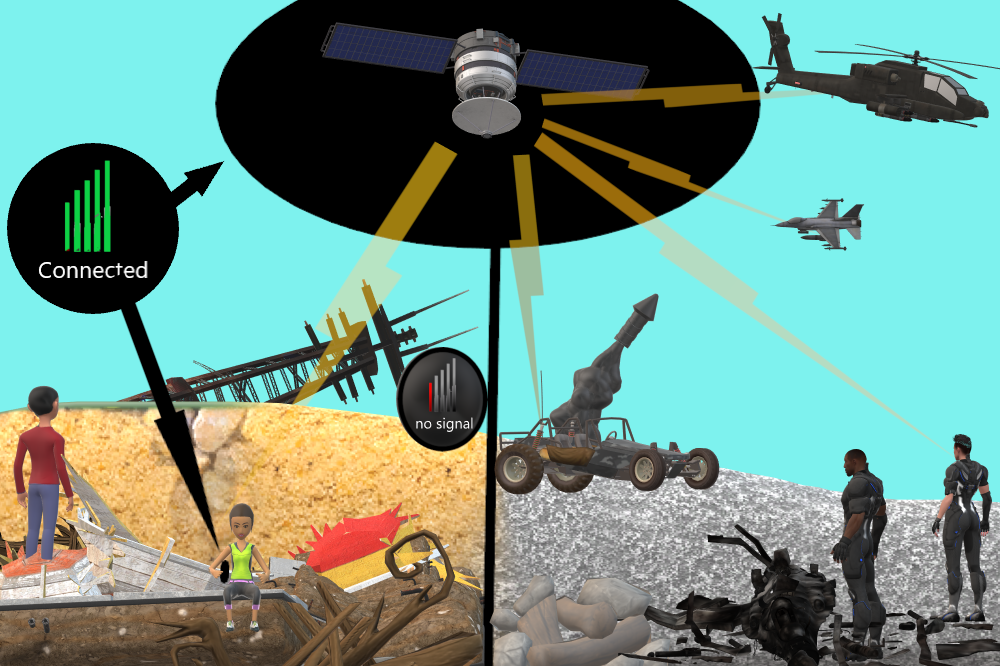Space, Freedom, and the Future- How Rapid Satellite Launch Capabilities Can Support Critical DoD Missions
September 5, 2022

Written By: Adrian Tymes and Sabrina Westerman, CubeCab
This is a guest blog, NSTXL takes no ownership of the ideas presented. It is intended to stimulate conversation and discussion within the community.
While the DOD, NASA, and other government agencies are starting to investigate rapid launch technology, many companies are already working on rapid satellite launch capabilities to deal with events on Earth as well as in space. The current record holder among government efforts, Space Safari, performed contract-to-launch in 21 days. Commercial efforts are underway, such as CubeCab’s, to provide launches as quick as the next business day. This will enable new classes of capability that the government should be prepared to deploy, such as:
Quickly Handling Debris-Generating Events
Currently, events like the November 2021 Russian ASAT test generate debris that causes headaches for people, but few responses have yet been mounted. With rapid launch, debris mitigating satellites could be launched to the newly-created cloud of debris while it is still relatively in one place, making mapping and cleanup far easier.
Disaster Response
Events on the ground do not conveniently wait months or years for space capability to adjust. When people need access to space resources, they often need them right away. For instance, a hurricane could hit a major city, flooding landlines and destroying cell phone towers. Many of those people will become trapped with no ability to call for help, google the closest shelter, let loved ones know they are alive, or summon the aid they need for survival while working toward repairing the infrastructure. For better or for worse, we have become so reliant on GPS to guide us that even soldiers trained in wilderness survival rely on satellites to guide them back to base. With rapid launch, we could put satellite-enabled telecommunications and observation over an affected area fast enough to provide aid, rather than taking so long that any relevant disaster response has long since been completed before the first satellite goes up.
Counter-Censorship
Among the tools repressive governments employ to put down protests is to limit access to the Internet (as seen by Cuba), or require news stations in their country to only report their approved version of what is happening (as seen by Russia). This effort to deny access to information via the Internet is particularly effective because the protestors are unaware of the support coming from the USA, surrounding nations, and even next door. This makes activists feel isolated, wondering if they have support; hinders protestors’ efforts to share information; and obscures the situation on the ground, hiding atrocities from the public eye. If rapid launch was possible, a small CubeSat constellation could be launched to provide satellite internet to the affected area. This could also benefit the DOD as they can quickly launch and maintain their own secure Internet for US and allied troops overseas. We already have the technology to create the satellites, but the launching technology and paperwork approval process is time consuming and onerous.
Military Relevant Timescales
Starlink has provided extreme utility to the defense of Ukraine, for communications as well as forward observation and tracking the invaders’ assets. Russia and China do not care that this is provided by a commercial company; they act the same as if this was a DOD-directed project, and Russia has declared Starlink’s assets to be legitimate military targets (thankfully they do not currently possess the capability to destroy Starlink’s constellations). A cyberattack on Viasat was among the first strikes in Russia’s invasion. “If you’re going to do the time, you may as well do the crime” – that is, it would be in the US’s national security interest to make rapid launch for commercial assets available, on top of the obvious utility to the DOD to replace a satellite, or launch a repair drone, within a day of a satellite going offline rather than the current several month delay.
In addition to providing funding, the government can help by streamlining the paperwork and regulatory processes. Currently, the FAA and other agencies require separate applications to approve a satellite for launch, reviewed manually. Automating the paperwork process to the extent practicable would allow one agency to handle the form from the satellite operator, which then informs other relevant agencies of the satellite’s flight path, orbit, specifications, components, capabilities, etc. to gain approval or denial.





